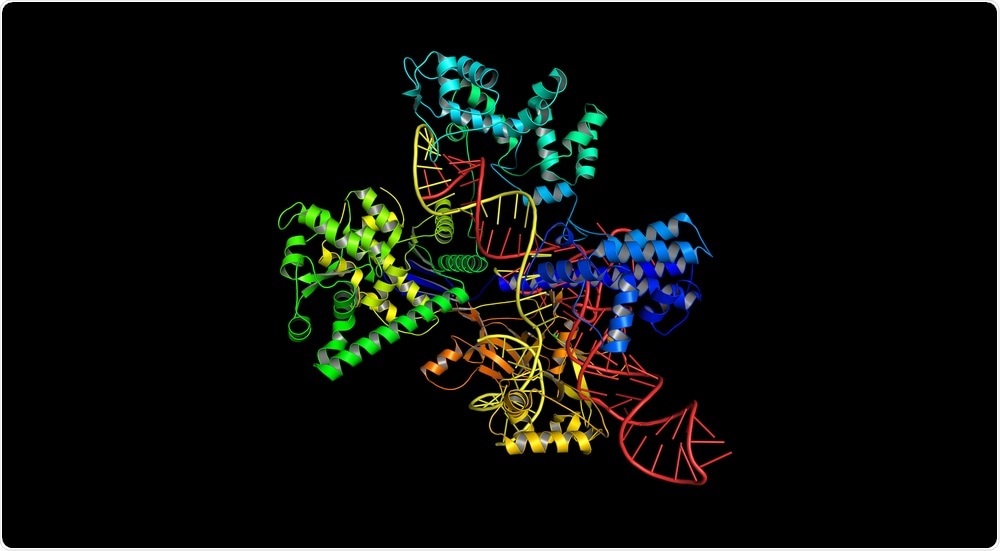Skoltech scientists and their collaborators from Russia and the United States have demonstrated that the two components of the bacterial CRISPR-Cas immunity system, one that destroys foreign genetic elements like viruses and the other one that develops “memories” of foreign genetic elements by storing fragments of their DNA in a unique location of the bacterial genome, are physically connected.

CRISPR Cas System. Image Credit: ibreakstock/Shutterstock.com
This connection enables bacteria to effectively update their immune memory upon infection by mutant viruses that find out how to evade the CRISPR-Cas defense. The study was published in the Proceedings of the National Academy of Sciences.
CRISPR-Cas is a defense mechanism that offers bacteria resistance to their viruses (bacteriophages). It destroys DNA from already confronted opponents by “comparing” it with spacers—short genetic information stored as a “library” in a “memory chip” situated in a unique site of the bacterial genome.
CRISPR-Cas “learns” to identify new enemies by adding new viral-derived spacers into this library when infection occurs. The two CRISPR functioning stages—acquiring spacers and using them to fight reinfections, are known as adaptation and interference, respectively.
To avoid CRISPR, phages acquire mutations that introduce mismatches with spacers. So, in order to maintain an effective defense, the CRISPR-Cas system needs to update the set of spacers faster than mutant phages with escape mutations arise. To meet this requirement, CRISPR-Cas systems have evolved a special mechanism of ‘primed adaptation’.”
Olga Musharova, Study First Author and Research Scientist, Skoltech
“During primed adaptation preexisting spacers that recognize a target, even inefficiently, promote very efficient acquisition of additional spacers from the same DNA molecule on which the target is located,” added Musharova.
Although the precise molecular mechanism behind priming is not yet clear, it evidently needs tight coordination between the memorizing and destroying parts of the CRISPR mechanism.
In the new study, Skoltech Professor Konstantin Severinov, Musharova, and their collaborators could confirm the occurrence of a “priming complex” including the Cas1-Cas2 proteins responsible for obtaining new spacers, as well as the Cas3 protein that cleaves enemy DNA.
The part that destroys foreign DNA and the part that acquires new information for the future protective function of CRISPR-Cas system are linked. It’s as if the mallet in a Whac-A-Mole game could also take pictures of the moles for future reference.”
Konstantin Severinov, Professor, Skoltech
The researchers performed experiments with Escherichia coli and demonstrated that fragments of DNA that are degraded by Cas3 are directly sent over to Cas1-Cas2 as “prespacers” that ultimately become spacers.
This result is of fundamental significance. We uncovered the link between the interference and the adaptation processes. Our findings also show how the CRISPR adaptation can be made more efficient, which is important for using bacterial populations for information storage.”
Olga Musharova, Study First Author and Research Scientist, Skoltech
The researchers plan to continue the analysis of primed adaptation in bacterial cells and discovering the most effective means to install preferred “memories” in bacterial DNA in the form of spacers.